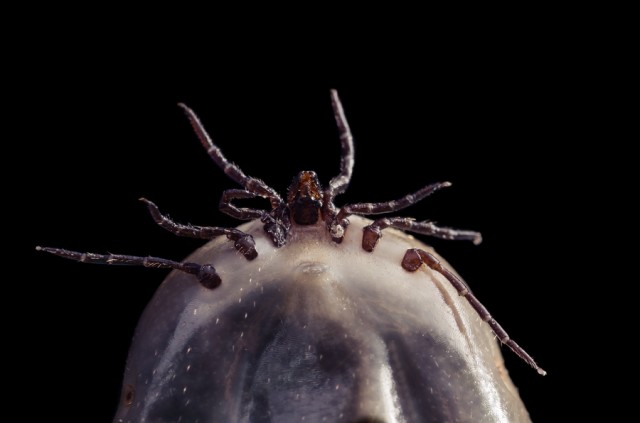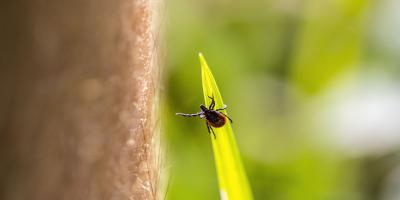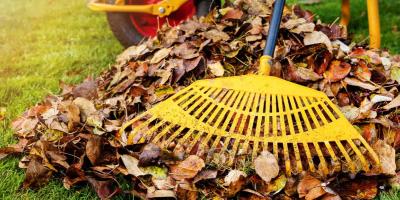Tick Check: How To Keep Family & Pets Safe This Summer

Picnics, watermelons, sunny days, and lazy afternoon - these are some of the most enjoyable summertime features that New Englanders look forward to all through the long, cold winter. But along with the warm weather and sunshine also come the re-emergence of ticks, and that can put a serious damper on the fun if not handled correctly.
Whether you’re headed out for a hike or simply settling in for an afternoon in the hammock, it always helps to have a game plan to keep ticks away, and the knowledge on how to properly remove them if they do hitch a ride on you, your family, or your pets.
Here’s a look at how to safely find and remove ticks, how to spot key hiding spaces, and how to keep them away from your summertime fun all season long.
How To Properly Check For Ticks
Rash, fever, itching, and lyme disease - tick-borne diseases show up in many different forms, but they’ve all got one thing in common: they are all preventable with a smart tick check strategy.
Of course, finding ticks in the height of summertime is not always as easy as simply giving a once-over glance after some time outside. A thorough tick check goes deep into those areas most likely to be overlooked, including:
- Under the arms
- Around, inside, and behind the ears
- The back of the knees
- Inside the belly button
- Hidden in and around hair
- Between the legs
- Near the waist
- On clothing and shoes
According to the CDC, one of the best ways to prevent unattached ticks you may miss during your check from latching on is to take a shower within two hours of coming in from the outdoors. This can prevent ticks who may have hitched a ride on clothing or in your hair from ever finding their way down to the skin.
Be sure to thoroughly check yourself, children, and pets each time you venture outdoors in the summer. Remember: an unfed tick can be tiny - smaller than a fingernail - and can be easily overlooked if you’re not careful.
Tick Removal Tips
The goal of any good tick check is to make sure no ticks have attached themselves during your time outside - and, importantly, to remove any who may have grabbed on unnoticed. If you do notice a tick beginning to feed, there are a few key ways to take immediate action.
Ticks are famously resilient, and typically are much more durable than other insects when it comes to crushing or squashing compared to ants, mosquitos, or other bugs. The key is to remove the tick as close to the skin as possible, where the tick’s small head has latched on to the skin surface in search of the blood below.
A fine-tipped tweezer can help get down to the skin surface to remove the tick completely. Once you’ve grabbed the tick, pull up and away completely - never twist or jerk quickly, because the biting part can actually break off and remain in the skin, which can be hugely difficult to then remove. Never crush a tick with your fingers.
Once you’ve removed the tick, be sure to clean the skin and your hands thoroughly with rubbing alcohol or soap and water. Live ticks removed from the skin should be disposed of by placing it in alcohol, sealing it in a sealed bag or container, or flushing down the toilet.
Check the area frequently over the following days and weeks for signs of a rash, and contact a doctor if itchiness or redness appears.
Where Ticks Are Most Likely To Be Hiding
Who doesn't love the feeling of running through the tall grass on a warm summer day? Ticks sure love it - mostly because it gives them plenty of places to hide out and wait for a host to latch onto, and that makes tall, grassy areas prime location for tick danger.
Ticks can also hide out on trees, shrubs, outdoor tables, lawn equipment, and just about anywhere else a person, pet, or wildlife would be likely to pass by. That’s why it’s important to keep an eye out every time you set out on a summer day, and why it’s critical to check for ticks every time you finish your adventure.
Keep Ticks Away This Summer
It may not be possible to entirely prevent ticks during the warm season, but it is absolutely possible to reduce the likelihood of contact straight through until fall.
Treating your clothes with tick repellant or DEET can help disguise your family for those outdoor outings, and some animals - like chickens - can actually help reduce the number of ticks in your areas. But at the end of the day, ticks are out there, and they’re waiting - so your best bet is to know what to do to keep them from latching on, and taking the right steps to remove them if they do.
If you’re looking for professional guidance or help keeping your property free from ticks through the summer, get in touch and let’s find the best solution for you - because nobody likes a picnic or summer day ruined by a bite from a tick.



